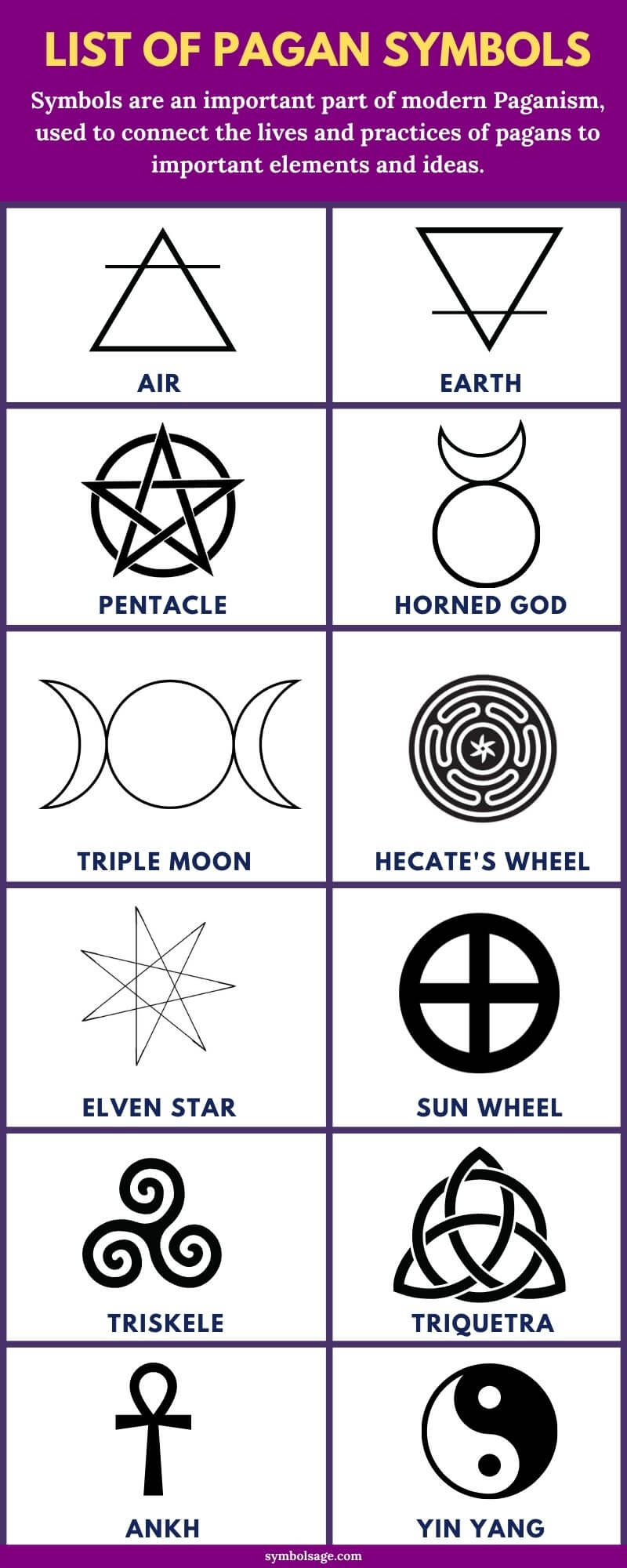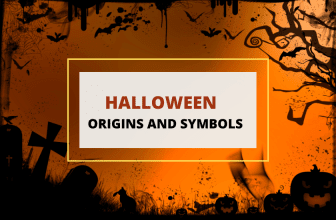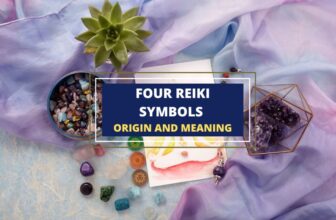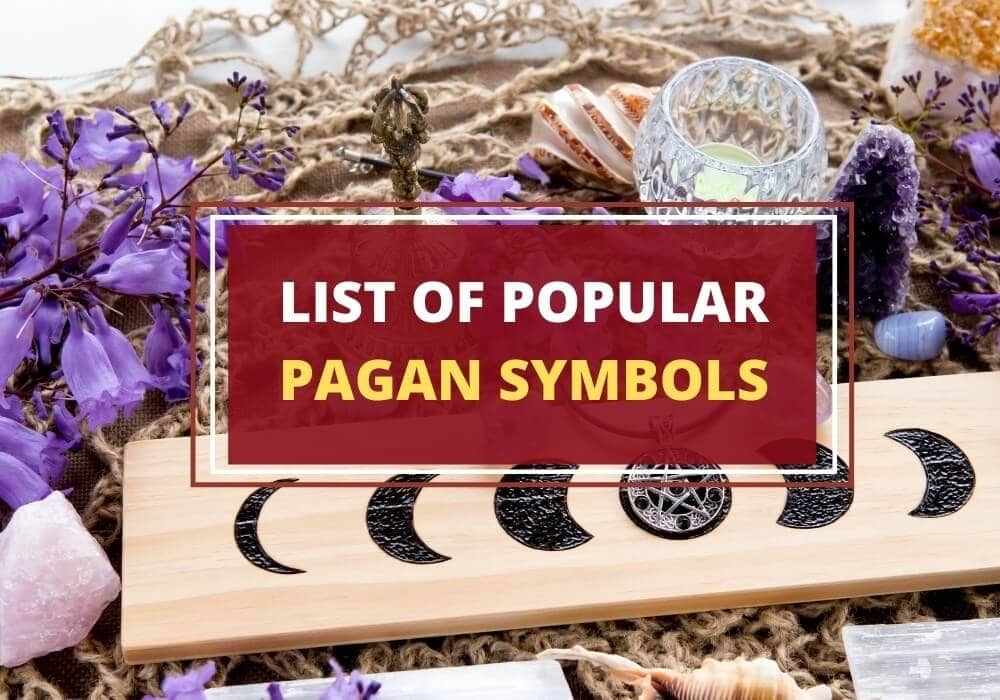
Table of Contents
Throughout history, symbols have played an important role in pagan traditions. These symbols are visual representations of deep-rooted beliefs and sacred wisdom. But what defines a pagan symbol? Most people think that paganism is just Wicca, but in reality, it encompasses so much more.
Let’s take a look at some of the most well known and important pagan symbols, what the mean, and how they evolved over time.
What is Paganism?
Paganism includes a diverse range of indigenous, polytheistic, and nature-based spiritual traditions. Some of these are Asatru, Hellenism, Druidry, Heathenry, Shamanism, and Kemeticism, to name just a few.
Many of these traditions are typically based on pre-Abrahamic traditions, and existed before the rise of Abrahamic religions like Christianity, Judaism, and Islam. Some of these symbols were later Christianized, which sometimes gave them conflicting meanings.
This wide breadth of influence means that each symbol can derive its meaning from different histories and traditions.
Popular Pagan Symbols
1. Pentagram/Pentacle
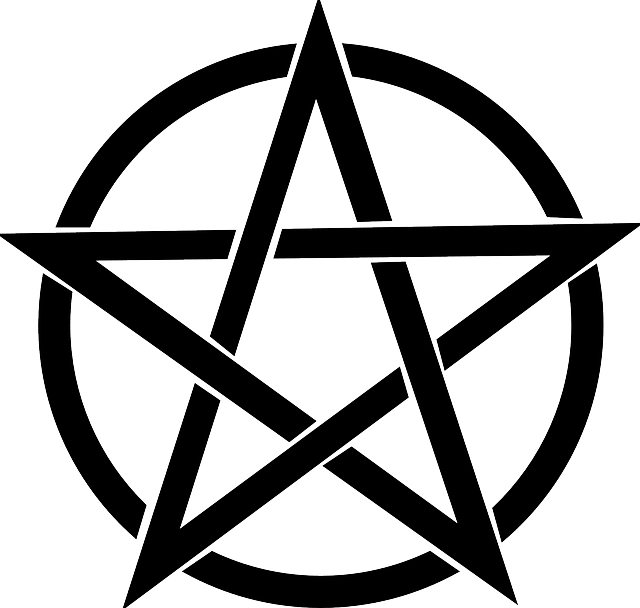
The Pentacle and Pentagram are five-pointed stars. They’re often confused as being the same, but they’re quite different. The pentagram is a five-pointed star, with each of its points representing one of the five classical elements: Earth, air, fire, water, and spirit. Moving clockwise from the spirit, the elements are placed in order of density – fire, air, water, and earth.
The pentacle, on the other hand, is a pentagram enclosed within a circle. It holds the same meaning as a pentagram, but the circle emphasizes unity, wholeness, and protection. All five points should touch the circle in a pentacle, symbolic of the interconnectedness of all things. The tip of the star represents the most important element: The spirit, or self.
While both symbols have been used in various cultures and contexts throughout history, in modern Wiccan and pagan practices, they are often seen as symbols of faith, protection, and the interconnectedness of life forces.
With its five points, the pentacle is also imbued with beliefs relating to the number five, regarded as a mystical human number. When worn, the pentacle can symbolize protection for a traveler and a connection to the elements. The pentacle was also traditionally placed over the doorway to protect pagan homes from evil spirits.
2. Horned God
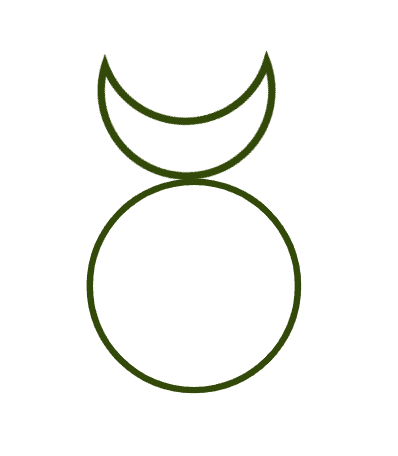
The Horned God is often depicted as a deity with antlers or horns, and represents the male aspect of divinity, embodying virility, strength, and the wild nature of the untamed woods. He is associated with animals, forests, and the cyclical pattern of life and death.
In some myths, the Horned God stands as the consort to the Triple Goddess, complementing her feminine energy. The horned god has roots in various ancient European deities like Cernunnos and Pan. Today, he remains significant in contemporary Wicca.
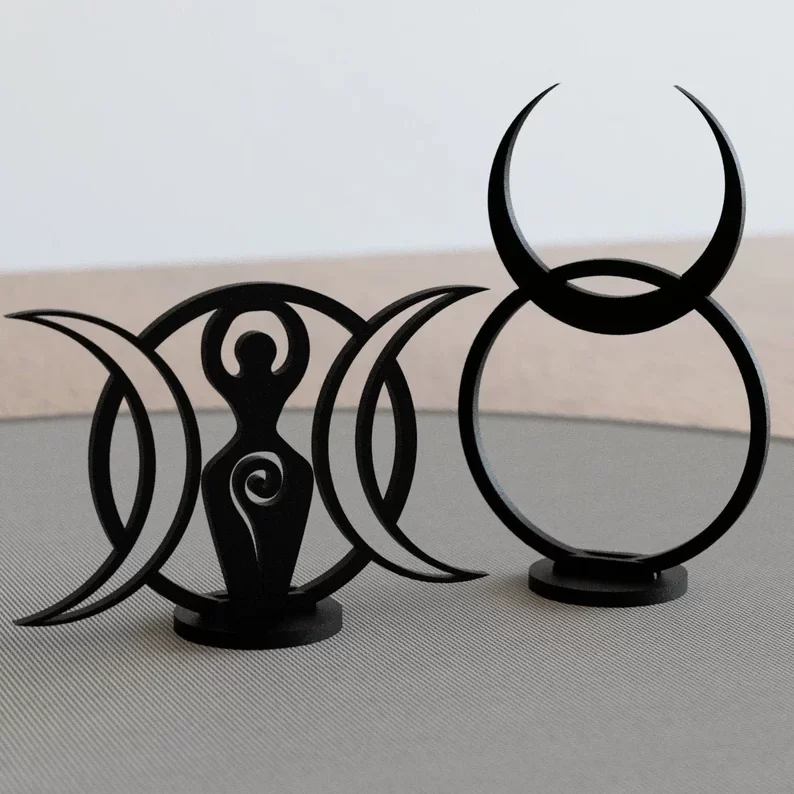
In its simplest form, the symbol is depicted as a circle topped with a crescent moon on its side as horns. The connection between the deity and earthly being ties into the Wiccan belief that the Horned God guides and protects spirits as they pass into the afterlife.
3. Triple Goddess Symbol
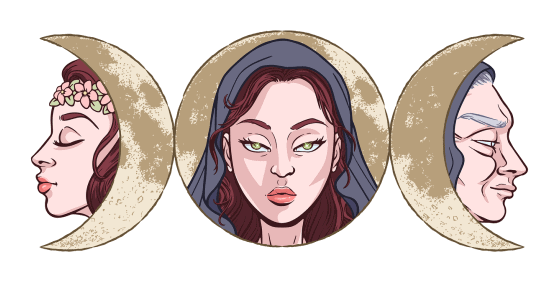
The Triple Goddess symbol features a waxing crescent, a full moon, and a waning crescent. Each moon phase signifies a distinct phase in a woman’s life:
- The Maiden (new waxing moon): Embodies youth, new beginnings, purity, and creation.
- The Mother (full moon): Embodies nourishment, fertility, responsibility, and power.
- The Crone (fading waning moon): Embodies fulfillment, culmination, wisdom, and endings.
These phases mirror the cyclical nature of life, from birth to maturation, and eventually, to wisdom. While the representation of these phases has been observed in various cultures and epochs, in contemporary Wiccan and pagan traditions, the Triple Goddess is a symbol of feminine divinity, the ever-changing cycle of life, and the profound bond between the different stages of womanhood.
4. Hecate’s Wheel
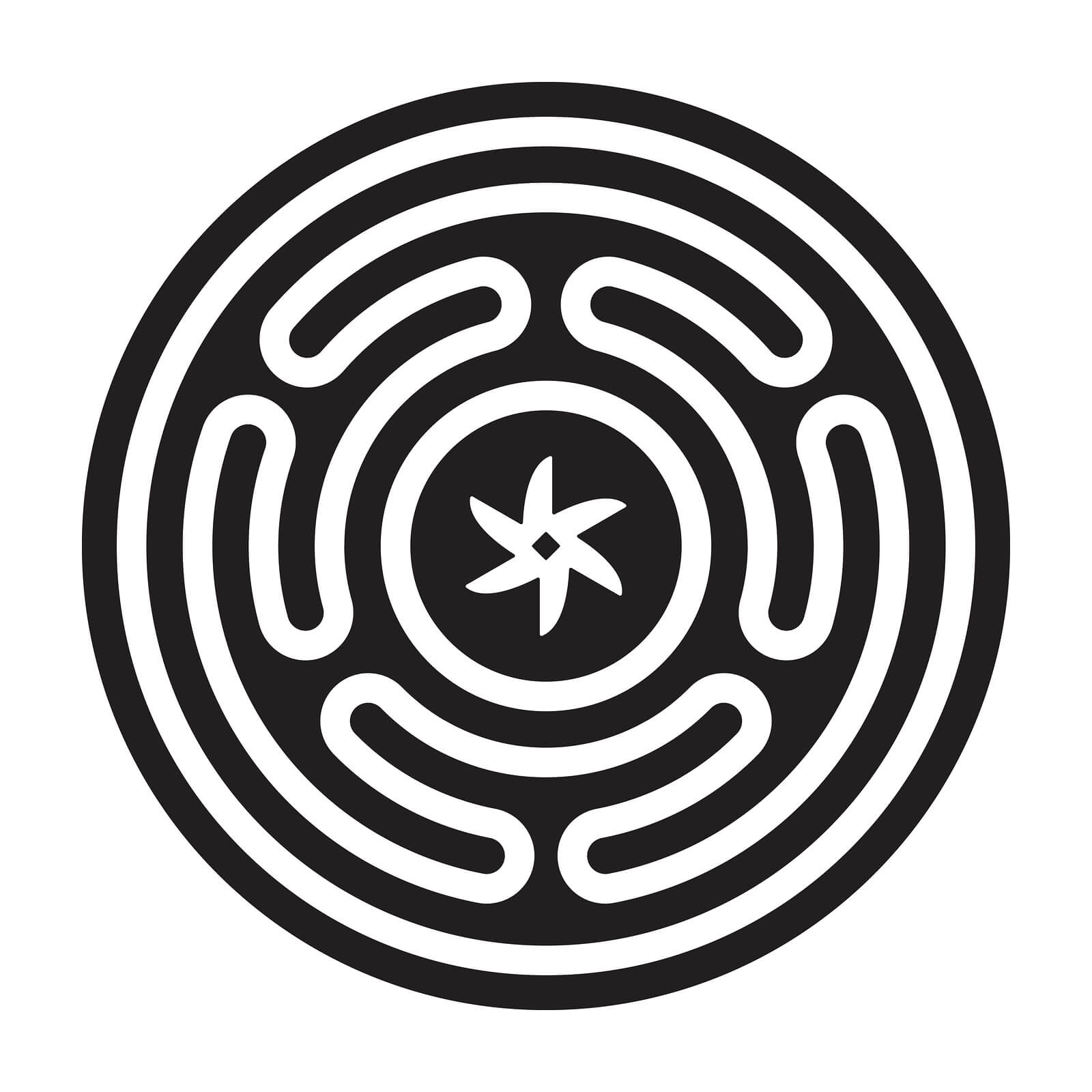
Hecate’s Wheel (also known as the Stropholos of Hecate) is another visual representation of the Maiden, Mother, and Crone. The symbol gets its origins from Greek legend, where the Goddess Hecate was known as the guardian of crossroads, magic, and knowledge. The Goddess Hecate was commonly depicted as three-formed or triple-bodied, which translates to the simplified triple symbol.
The symbol consists of a circular maze with three distinct whirls that are all connected. In Ancient Hellenic religions, Hecate’s Wheel is a symbol of knowledge and divine thought. Modern Wiccan has adapted Hecate’s Wheel to represent the Divine Feminine and the power and knowledge that comes with the cycle of life.
5. Elven Star
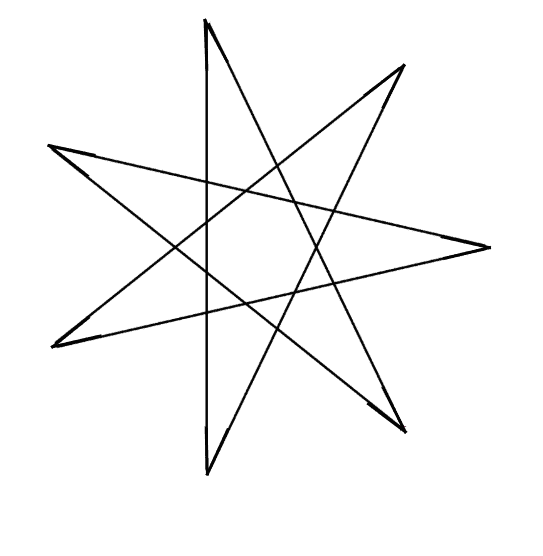
The Elven Star is a seven-pointed star, also known as a heptagram or Faery Star. One of the oldest recorded meanings of the Elven Star comes from the Kabbalistic tradition, where it represents the sphere of Venus and the power of love.
It is also believed to be a visual representation of the significance of the number seven, which is revered in many religions and traditions. In Christian tradition, the number seven corresponds with the seven days of creation; the Koran speaks of seven heavens; Muslim pilgrims walk around Mecca seven times; in Hinduism, there are seven higher worlds and seven underworlds; and in Buddhism, the new-born Buddha rose to take seven steps.
In Faery belief systems, the heptagram is an extension of the pentagram used in Wicca. It is believed that with two additional points, the heptagram extends human awareness from the known to include ‘Below’ and ‘Within’.
The heptagram is a powerful symbol in Feary belief which is even understood to be a gateway to other realms, hence the references to the unseen ‘below’ and within’ points.
6. Sun Wheel
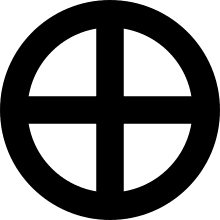
In its simplest form, the Sun Wheel symbol is depicted by a circle enclosing a cross. The four segments of this symbol were used in some pagan religions to mark solstices and equinoxes. It is sometimes referred to as the Solar Cross, Pagan Cross, or Odin’s Cross (in Norse culture).
More complex portrayals of the sun wheel are used in Wiccan religions to correspond with the eight Sabbats (akin to seasons) in their ‘Wheel of the Year’. In many cultures, the sun is revered as an all-powerful and supreme entity. The Sun Wheel is used as a symbol to invoke the powers of the sun, particularly in rituals for blessings of fertility, life, and abundance.
7. Triskele
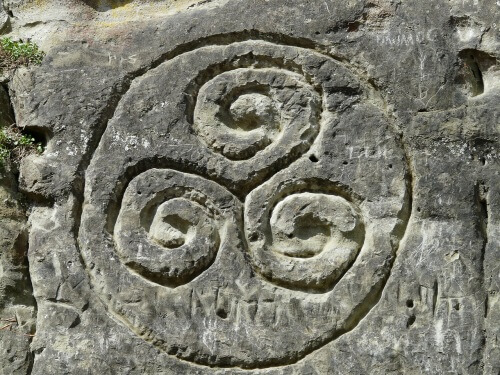
The Triskele, also known as the Triple Spiral or Triskelion, is an ancient symbol consisting of three interlocked spirals. Its origins can be traced back to the Neolithic era, making it one of the oldest symbols.
It’s typically associated with the Celts and is related to the concept of triplicity in unity. It represents the three realms of earth, sea, and sky; the spiritual world, present world, and the celestial world; the spirit, mind, and body; creation, preservation, and destruction; or past, present, and future.
The interconnected spiral has connotations of movement and motion, which is believed to symbolize energy, cycles, and progress. The triskele is often used in pagan rituals.
8. Triquetra
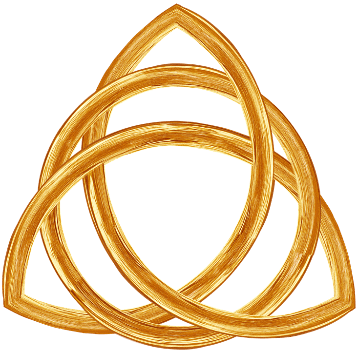
The triquetra, commonly known as the Trinity Knot, is a three-cornered Celtic symbol. Its three interlaced arcs demonstrate unity, interconnectedness, and cyclical patterns. While its origins are rooted in Celtic culture, over time it has been embraced by both paganism and Christianity.
In pagan contexts, the triquetra can represent the threefold nature of existence such as life, death, and rebirth, or the Triple Goddess (maiden, mother, crone). Conversely, in Christian symbolism, it often signifies the Holy Trinity: Father, Son, and Holy Spirit.
9. Ankh
The Ankh symbol is an ancient Egyptian symbol that resembles a cross topped with a loop. Predominantly representing life and immortality, it also symbolized death and rebirth. Used extensively in art and hieroglyphics, the ankh was often carried by Egyptian deities, pharaohs, and nobles.
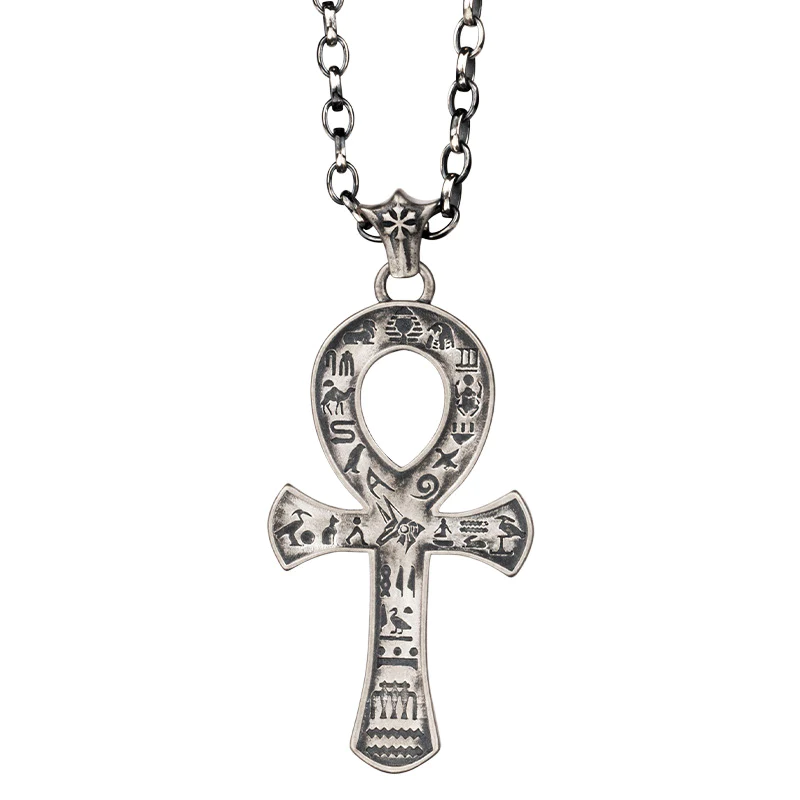
Today, the ankh continues to be used in Wiccan and Kemetic circles. It was also adopted as a version of the Christian cross by the early Coptic Christians.
The Ankh was used as a symbol of protection designed to guide the spirit in their journey towards paradise known as the ‘Field of Reeds’. The cross represents a union of God and Goddess, and the loop depicts the rising sun, which has connotations of infinity.
This symbolism and Egyptian belief are why the Ankh has often been used in the Wiccan and Pagan religions as a symbol of eternal life. It is used in jewelry and ritual for protection.
10. Yin Yang
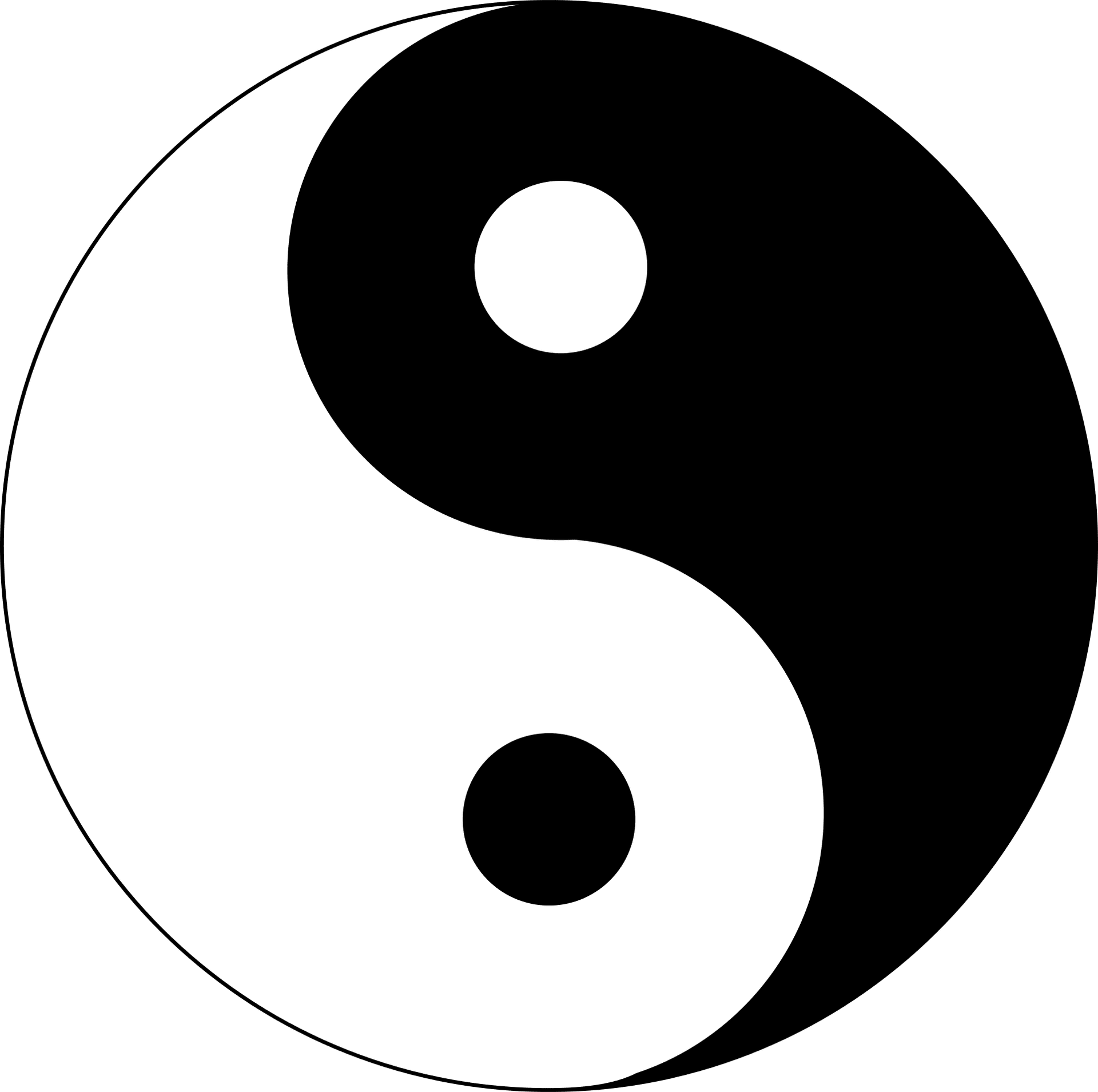
The Yin Yang symbol is depicted as a circle with split by a curved line into black and white halves. Sometimes a small circle of the opposite color is placed in each half. It is symbolic of balance and harmony, particularly the balance of opposites.
The symbol is rooted in eastern spirituality and is used in Chinese culture and Taoism. Yin yan represents the polarity that is inherent with all things – light and dark, good and evil – and the constant quest for balance and connection between two opposing forces.
It is not usually used in rituals but is more commonly worn or displayed as a symbol to guide the wearer or user toward balance.
11. Spiral Goddess
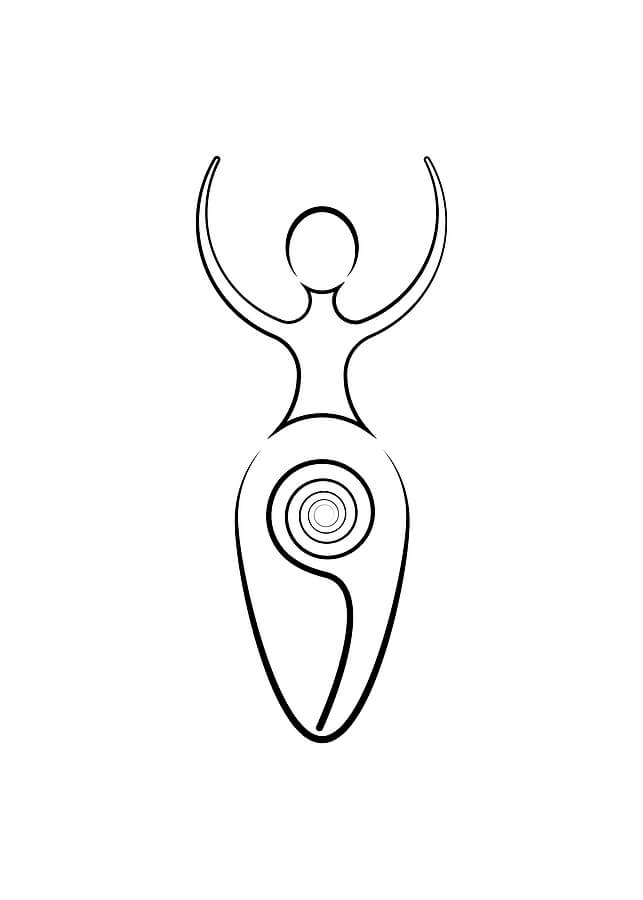
The Spiral Goddess is a powerful symbol often associated with the Neopagan and Wiccan traditions. She embodies the essence of the feminine divine, representing the continuous cycle of life, death, and rebirth. The spiral itself is an ancient motif that symbolizes the never-ending cycles of growth, change, and eternal life.
In the form of the Spiral Goddess, the spiral often emanates from her womb area, emphasizing her role as the life giving mother of all. Throughout various pagan traditions, the Spiral Goddess is revered as a symbol of the interconnectedness of life and the infinite power and energy of the female spirit.
12. Witch’s Knot
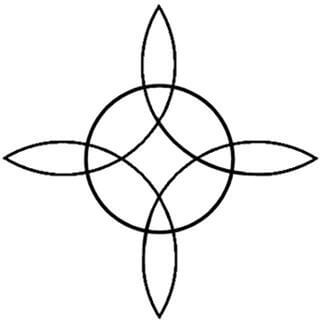
Also known as the Magic Knot or the Witch’s Charm, this symbol features a series of interwoven loops. The Witches’ Knot is believed to possess protective properties, warding off negative energies and evil spirits.
Historically, it was used as a charm against evil spirits or ill intent. But within modern witchcraft and Wiccan traditions, the Witches’ Knot symbolizes the interconnectedness of all life and the powerful union of the elements.
13. Green Man
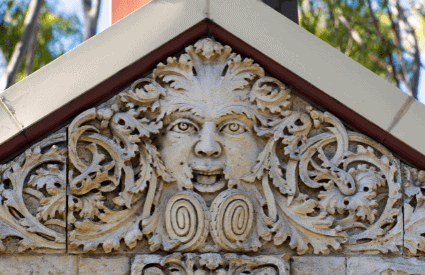
Green man. The Green Man is a symbol depicted as a face formed from or surrounded by leaves, branches, or vines. The Green Man embodies the spirit of nature, rebirth, and the cyclic nature of life and seasons. He is deeply connected to ancient Celtic and Druidic beliefs but also appears in various forms in other cultures.
Today, for many modern pagans and nature-based spiritual paths, the Green Man represents the interconnectedness of all life and the immanence of the divine in the natural world.
14. Labrys
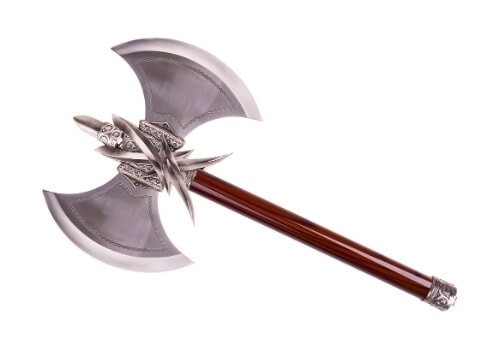
The labrys is a double-headed axe that originated from ancient Crete and holds significant symbolism in various cultures. In Minoan culture, it was associated with the Minoan goddess and was a symbol of power, authority, and matriarchy.
Over time, the labrys also became emblematic of female empowerment and was adopted by lesbian and feminist movements in the 20th century as a symbol of strength and self-sufficiency.
Its ancient connotations combined with its modern associations make the labrys a multifaceted symbol spanning different epochs and meanings.
15. Ouroboros
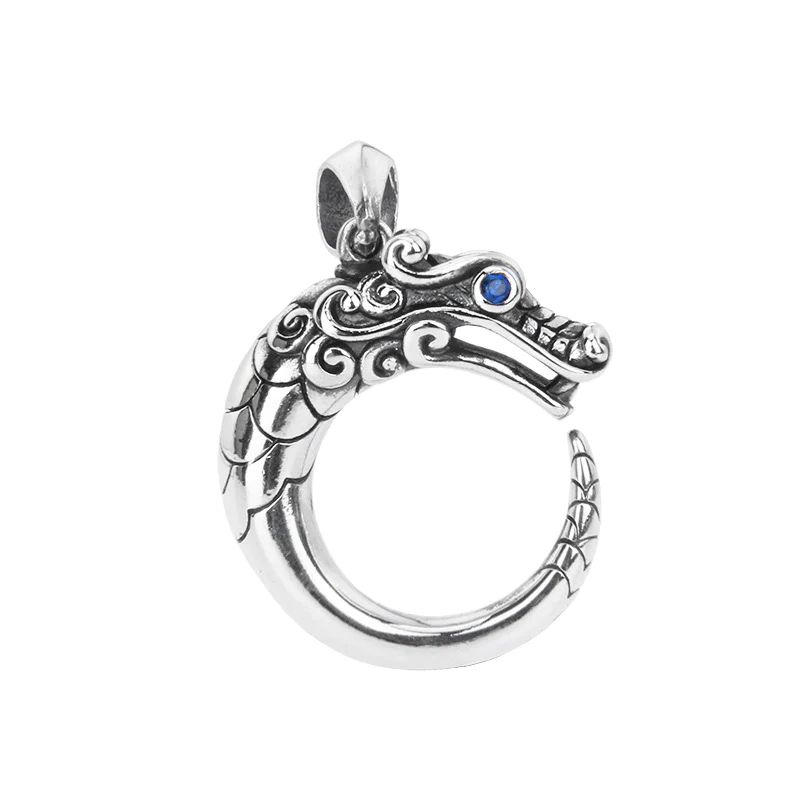
The ouroboros is an ancient symbol depicting a serpent or dragon eating its own tail, representing the cyclical nature of life, death, and rebirth, as well as the eternal unity of all things. Originating in ancient Egyptian iconography, it later appeared in Gnostic, Greek, and Norse traditions, symbolizing the endless cycle of life’s renewal.
In modern paganism, the ouroboros carries themes of nature’s endless cycles, balance, and the interconnectedness of life and death. Its ancient roots combined with contemporary spiritual interpretations make the ouroboros a rich and enduring emblem in various spiritual paths.
16. Valknut
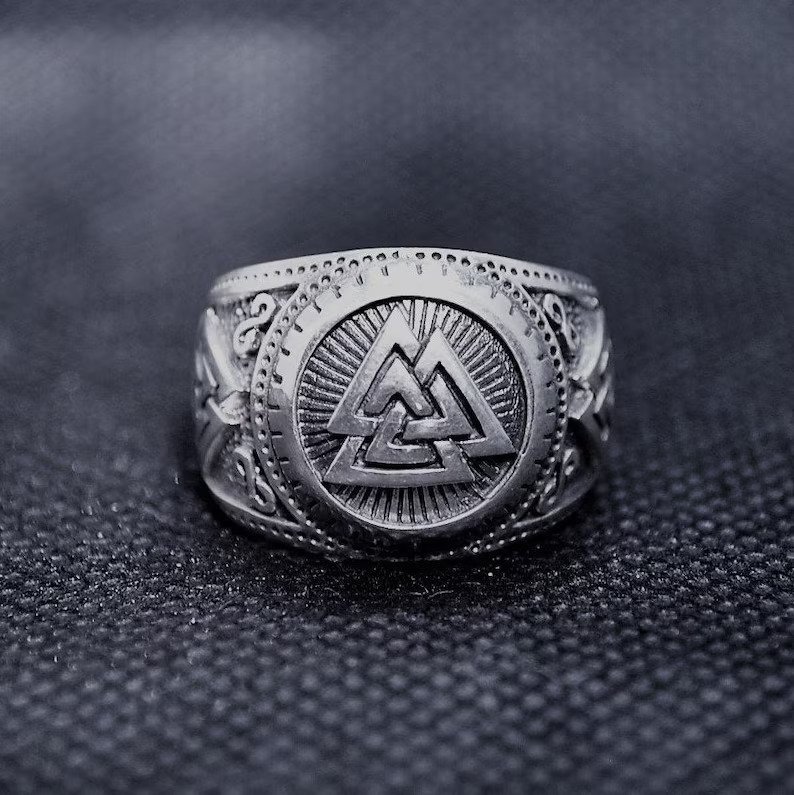
The valknut is a Norse symbol consisting of three interlocked triangles, often associated with the god Odin and the concept of death in Norse mythology. The name “valknut” is derived from Old Norse words meaning “slain warriors” and “knot.”
While its precise meaning remains a matter of debate among scholars, it is frequently found on runestones and burial sites, suggesting a connection to death, the afterlife, or possibly Odin’s power to bind and unbind. In modern times, the valknut is often worn or used as a symbol by those who feel a connection to Norse traditions or spirituality, though its usage should be approached with respect given its profound and possibly enigmatic meanings in ancient contexts.
17. Awen
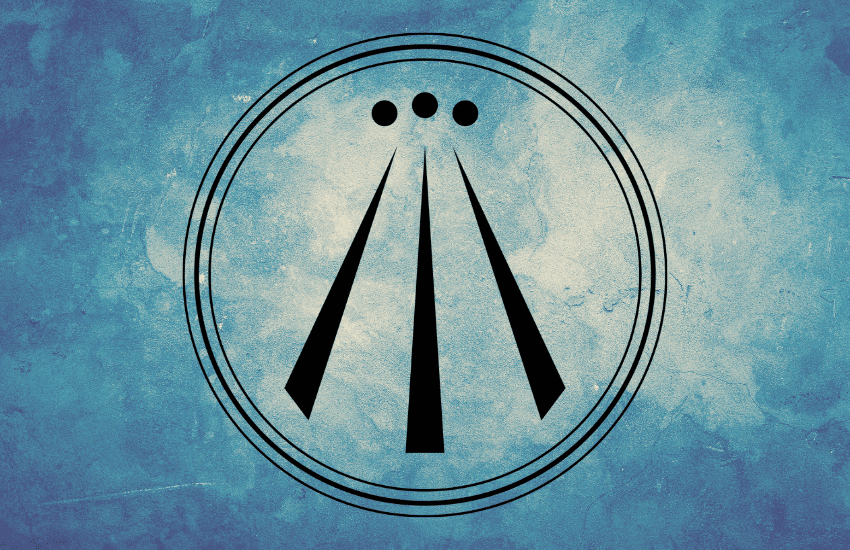
The awen is a symbol deeply rooted in Celtic tradition, consisting of three rays leading up to three dots, often accompanied by a surrounding circle. The term “awen” in the Welsh language translates to “inspiration” or “essence,” and the symbol itself embodies the harmony of opposites — the left and right rays symbolize male and female energy, while the center ray represents the balance between them.
Historically, the awen has been associated with bards, poets, and storytellers within Druidic traditions. In contemporary times, many who follow Druidry or are inspired by Celtic spirituality use the awen as a symbol of inspiration, divine illumination, and the balance between masculine and feminine energies.
18. Eye of Horus
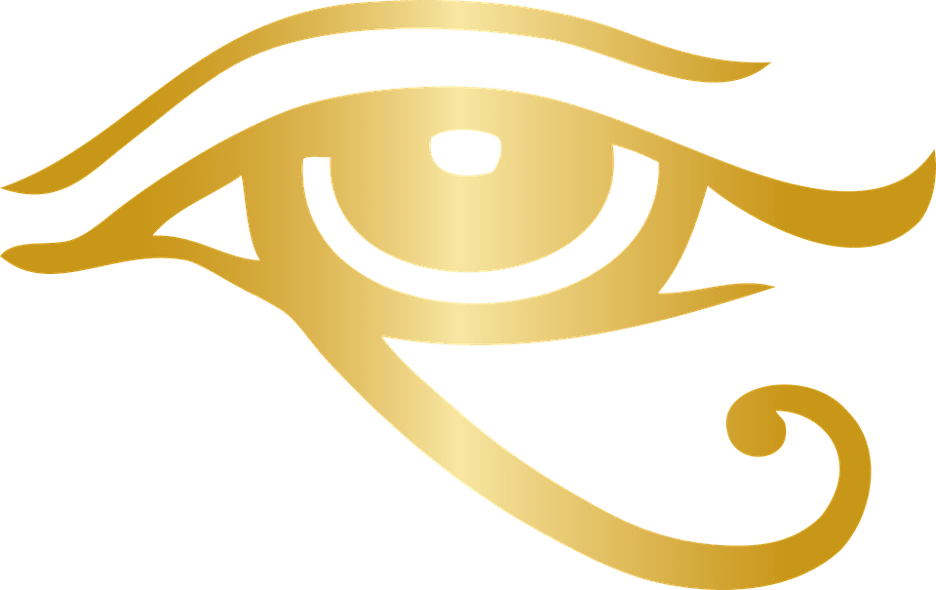
The Eye of Horus, also known as the “Wedjat,” is an ancient Egyptian symbol of protection, royal power, and good health. Originating from the myth wherein the god Horus loses his eye during a battle with Seth, and the eye is later restored by Thoth, it’s seen as a symbol of healing, restoration, and protection.
The individual parts of the eye also correlate with the six senses, including thought as the sixth sense. Beyond its ancient roots, the Eye of Horus has found a place in modern esoteric and pagan practices.
Many contemporary spiritualists and pagans adopt the symbol for its protective qualities, its ties to the divine, and its representation of inner vision and insight.
Wrapping Up
The above symbols have significance in ancient cultures and have been used around the world at one time or another. Some of these symbols also have religious and secular meanings attached to them. However, their importance in paganism derives from their significance in terms of the natural and the self. These symbols are ancient and most have existed since before many of the religions that later adapted them.
Similar Articles:
Pagan Gods and Goddesses Across the World
Pagan vs. Wiccan – Major Differences and Similarities
Top 14 Occult Symbols (and Their Surprising Meaning)
